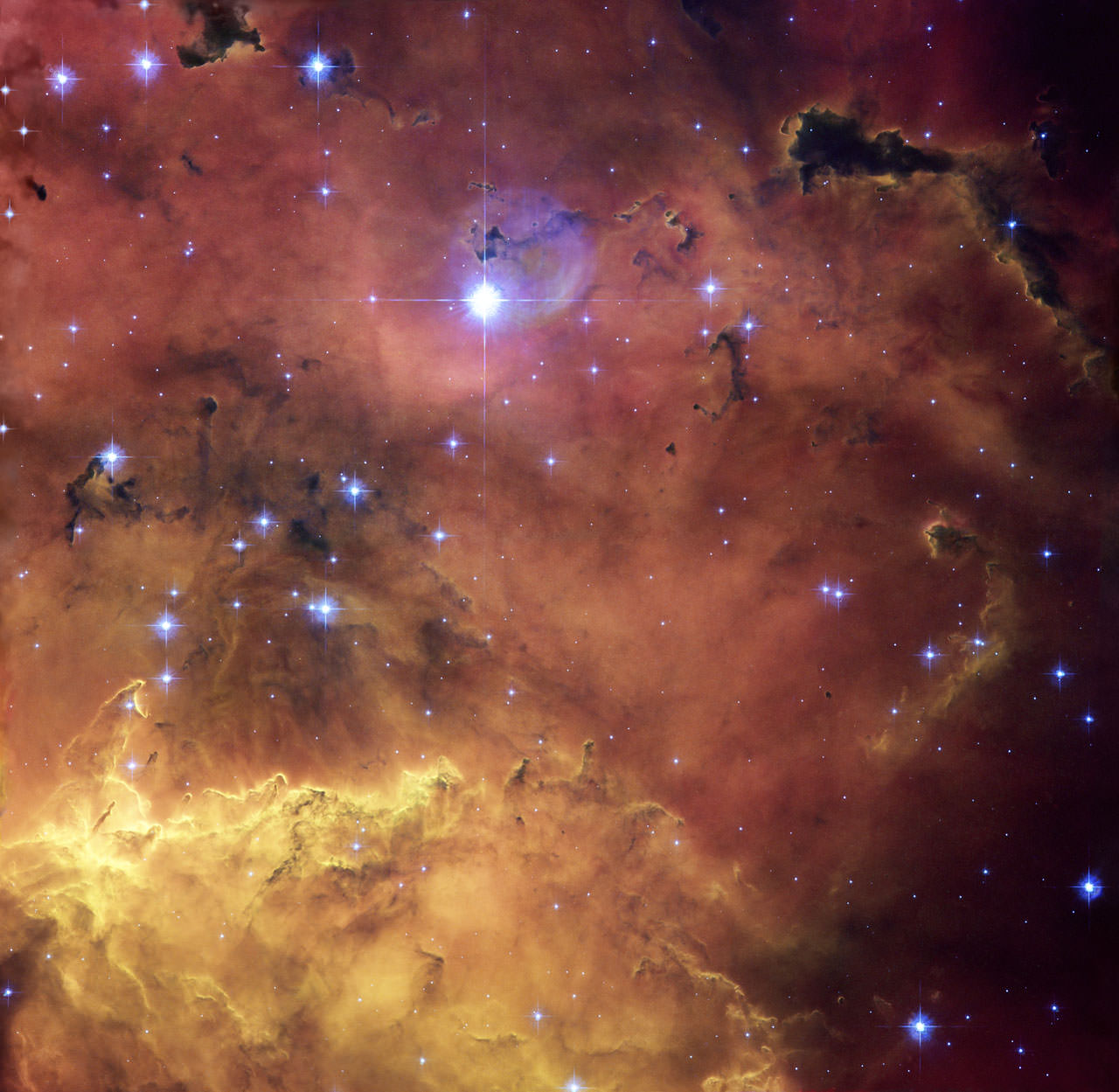[/caption]
OK, that headline doesn’t rhyme, but this incredible new Hubble image looks like a witch’s cauldron of an exotic cosmic brew. It billows with huge clouds of gas and dust and is sprinkled with Eye of Newt, um…er, bright blue hot young stars. These dust clouds in NGC 2467 look like a murky, shadowy liquid, but they are actually star forming regions made mostly of hydrogen, perfect for bubbling up newborn stars. And your little dog, too.
NGC 2467 lies in the southern constellation of Puppis, approximately 13,000 light-years from Earth.
The picture was created from images taken with the Wide Field Channel of the Advanced Camera for Surveys through three different filters (F550M, F660N and F658N, shown in blue, green and red respectively). These data were taken in 2004 but just released today.
This region looks somewhat like the Orion Nebula and the hot young stars that recently formed among this bubbling brew are emitting fierce ultraviolet radiation that is causing the whole scene to glow while also sculpting the environment and gradually eroding the gas clouds. Studies have shown that most of the radiation comes from the single hot and brilliant massive star just above the center of the image. Its fierce radiation has cleared the surrounding region and some of the next generation of stars are forming in the denser regions around the edge.
Source: ESA Hubble

